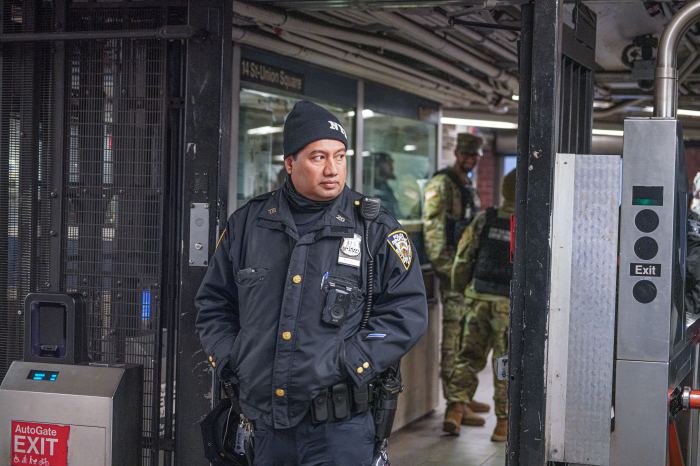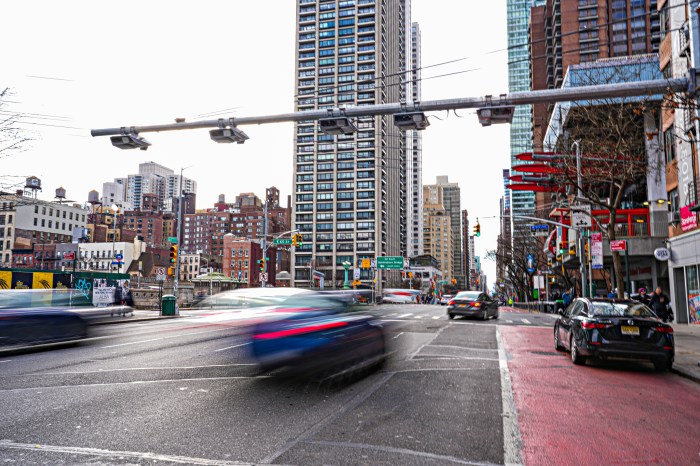
The union that represents MTA bus and subway workers is shaping its contract requests around the dangers of the job — and workers have threatened to strike if terms aren’t met.
With negotiations in full swing, members of Transit Workers Union (TWU) Local 100 packed an MTA board meeting on Wednesday hoisting posters of workers injured on the job.
Bus operators and train conductors who have been assaulted on duty or were involved in violent situations spoke about the perils of their work to justify higher wages and more safety improvements.
“We move 8 million people a day through this chaotic system,” John Samuelsen, president of Local 100, told the MTA board. “We get assaulted, spat upon, we even get murdered in the line of duty doing what we do. We deserve a contract that adequately reflects the work we do. Amidst the chaos, we perform day in and day out.”
John Browne, a bus operator who has worked for the agency for four years, talked about getting slashed in his neck and face by an angry passenger on his B35 two years ago.
“These are the kinds of things that we have to go through,” he said. “We work in a hostile environment and it’s dangerous — very, very dangerous.”
The current contract between the agency and the union, which represents 38,000 transit workers, expires Jan. 15.
TWU kicked off negotiations last month outside of MTA headquarters, downtown, with a lively rally that more closely resembled a block party. DJs blasted music heard from blocks away. About 3,000 members in attendance blew on train whistles — a trademark of the union’s rallies — and waved signs with the union’s slogan, “We move New York.”
Samuelsen threatened a strike if negotiations didn’t include sweeping safety reforms and wage increases above the 2 percent rate of inflation. Members in the crowd, many of whom worked through a two-year period without a contract just recently, cheered and pumped their fists.
Contract discussions between the parties are historically bitter affairs played out at the city and state level. During past contract talks, the MTA has cried poverty as union members demanded more appreciation for their work.
But union heads and labor experts believe this round of negotiations are poised play out much more smoothly. There’s a stronger union; better financial outlook for the MTA; and a chairman, Tom Prendergast, whose work in the transit sector dates back to 1975.
“Unlike his predecessors, Prendergast is fully aware of the dangers that we face in the bus and subway system,” Samuelsen said. “He has that background and understands the nuances of the arguments that we’re trying to make.”
After last month’s rally, Prendergast said he’s optimistic that his agency will be able to come to an agreement before the deadline — “We’re always confident … the economy is in much better shape. And we’re in better shape,” he said.
After Wednesday’s board meeting, Prendergast sympathized with workers and highlighted the importance of their roles within the agency.
“When you hear those comments, they strike your heart,” Prendergast said, referring to attacks against MTA employees. “The majority of what we achieve in the MTA family is all the employees—but for the most part it’s the front line employees.”
Mark Kagan, a former transit worker involved in the union’s 2002 contract negotiations and PH.D candidate in history at the CUNY Graduate Center, believed that a strike was unlikely. But he said that the union is good position to do so; it’s rebuilt itself after the three-day strike in 2005 that ravaged the union financially and divided members who were upset over its handling.
“Laboriously, over the last few years, Samuelsen fixed this problem,” said Kagan. “I think he feels that the union is strong enough to pose the threats it’s historically been able to, which is that when we go on strike there will be consequences.”
Currently, Local 100’s 18 committees are independently negotiating with the MTA. Later this month, the union is expected to bring its broader demands to the agency. Samuelsen argued that some safety improvements could directly benefit riders—like expanding off-board fare payments of Select Bus Service throughout the entire bus network.
“If have riders pay for their bus fares on the sidewalks, it speeds up buses and removes those bad interactions between riders and workers,” he said. “It’s a win-win.”



































